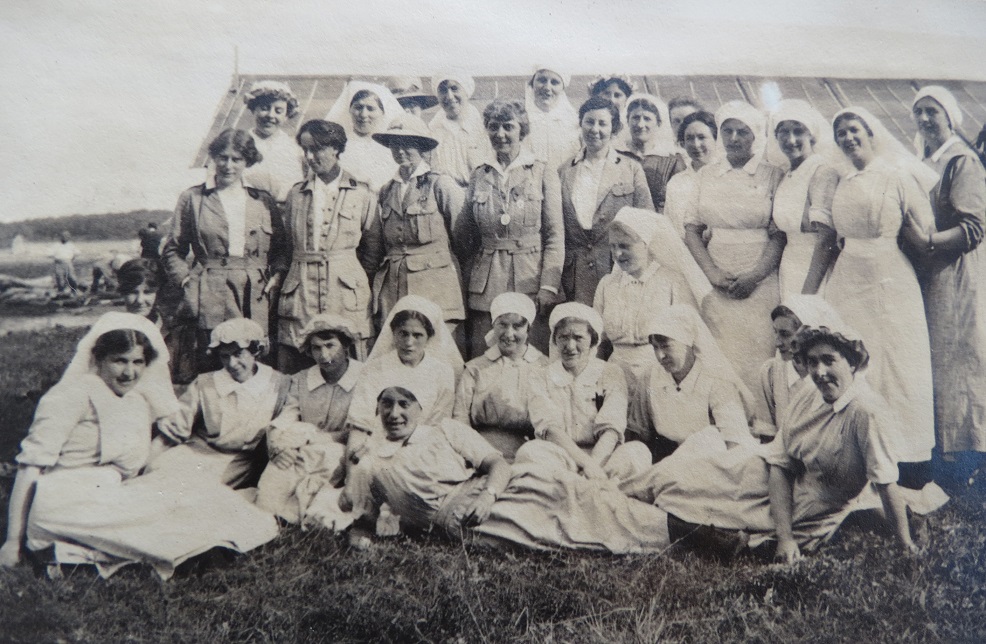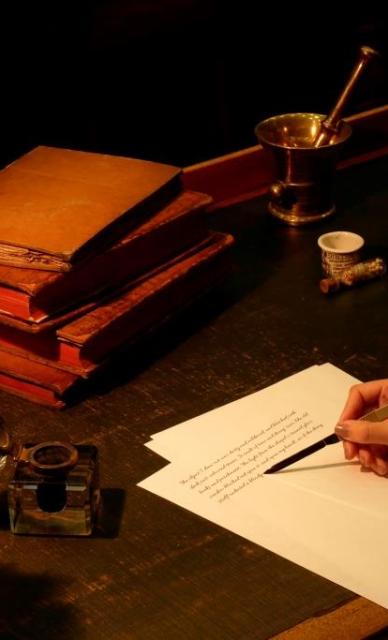Physicians' Gallery Newsletter
Updates on upcoming events, exhibitions and online stories
Empowering medical excellence, shaping healthcare futures.
1918 marked the end of the First World War and the enfranchisement of some British women. As part of the Imperial War Museum’s #womenswork100 initiative to discover more about the role and lives of women in the First World War, the RCPE has digitised its collection of post-war newsletters of the Scottish Women’s Hospital (SWH) at Royaumont. The SWH hospital at Royaumont was the largest British voluntary hospital, second nearest to the front line and the only one operated by women near the Western Front. As such, it provides a microcosm for our understanding of the contribution of women doctors during that period. Included in the collection donated by Lady Eileen Crofton (who wrote a book about the hospital in 1997) were the newsletters of the Royaumont Association, formed to maintain the comradeship amongst the female staff post-war. The newsletters which date from 1928 until 1973 tell the story of the hospital, its staff and it patients though a narrative of war-work with pen-portraits of some of the key figures associated with the Hospital; not least Dr. Elsie Inglis and Dr. Frances Ivens.
The SWH was conceived at a meeting of the Scottish Federation of Women’s Suffrage Societies just a few days after the outbreak of the First World War. It was the brainchild of Dr Elsie Inglis and Frances Iven, who saw the war as an opportunity to demonstrate what women could achieve in medicine unaided by men. Prior to the First World War, women doctors were limited to positions linked to women’s health, such as paediatrics, obstetrics and gynaecology, and few held consultant posts. The very first qualified Scottish female doctors played an active part during the First World War and with the exception of the work of Eileen Crofton there is little study of the association. The British War Office turned down the offer of association with the SWH and instead the SWH operated under the auspices of the French and Serbian Red Cross.
The Scottish Women’s Hospital at Royaumont was under the direction of the French Red Cross and located at Royaumont Abbey. The hospital, a formed Cistercian abbey, was started by Dr. Frances Ivens and Dr. Elsie Maud Inglis. The doctors at Royaumont dealt with patients from the Western Front and undertook pioneering research on the use of X-ray technology able to diagnose gas gangrene infections earlier than bacteriological reports and before the presentation of symptoms. The work by Dr. Ivens and Dr. Savill at Royaumont was not referred to in subsequent work on the use of x-ray for the diagnosis of gas gangrene.

There is no doubting the courage, skill and perseverance of the women who served at Royaumont. They retained a strong sisterly bond for decades afterwards, of which the newletters are evidence. Royaumont was the largest continuously-operating voluntary hospital in France at the end of the First World War. Its mortality rates were lower than its army-run equivalents. No fewer than 30 of Royaumont workers were awarded the Croix de Guerre, including Sister Catherine O’Rorke, who had been arrested with Edith Cavell in Brussels in 1915. Nurse Cavell’s execution provoked an international outcry. More than 1,000 women and a few men worked for the SWHU. A list of the women who served can be found here: http://www.scarletfinders.co.uk/138.html
April 1928
Download
November 1928
Download
November 1929
Download
April 1930
Download
February 1932
Download
May 1933
Download
November 1934
Download
March 1935
Download
January 1936
Download
January 1937
Download
January 1938
Download
January 1939
Download
September 1941, part 1
Download
September 1941, part 2
Download
August 1943
Download
February 1945
Download
January 1947
Download
January 1952
Download
January 1954
Download
January 1955
Download
January 1956, part 1
Download
January 1956, part 2
Download
January 1957
Download
January 1958
Download
January 1959
Download
January 1960
Download
January 1961
Download
January 1962
Download
January 1963
Download
January 1964
Download
January 1965
Download
January 1966
Download
January 1967
Download
January 1968, part 1
Download
January 1968, part 2
Download
January 1970
Download
January 1972
Download
January 1973
Download

Updates on upcoming events, exhibitions and online stories